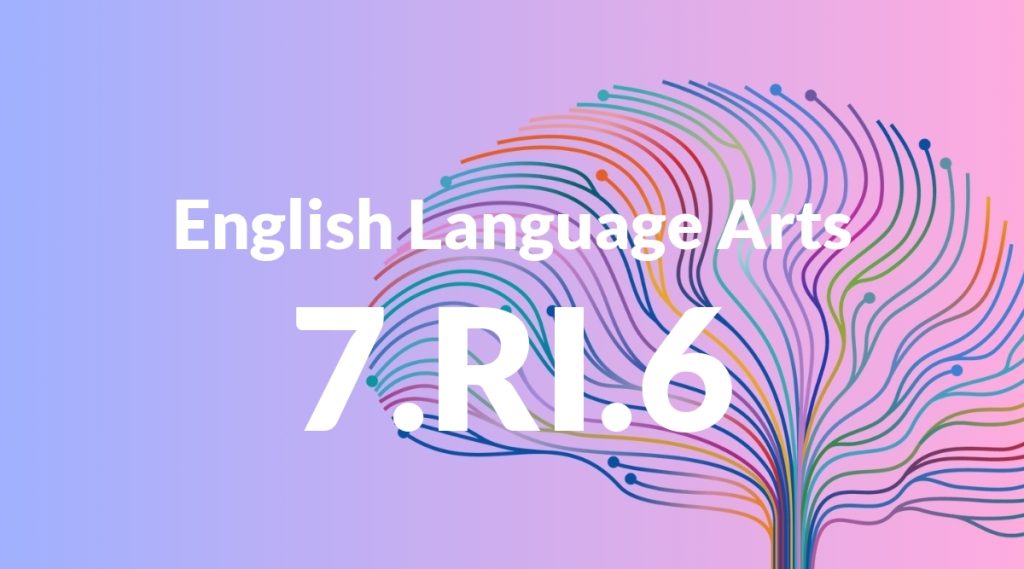Standard: 7.RI.6 – Determine an author’s point of view or purpose in a text and analyze how the author distinguishes his or her position from that of others.
Grade level: Grade 7
Subject: English Language Arts
Domain: Reading: Informational Text
Teacher Overview
This standard focuses on helping students understand how to determine an author’s point of view or purpose in a text. It’s important because it develops critical thinking skills and the ability to analyze texts deeper, which is essential for academic success and informed citizenship. Students should already know how to identify main ideas and supporting details in a text. They should also understand the basic concepts of perspective and purpose in writing.
After mastering this standard, students will be able to evaluate texts more critically, understanding deeper layers of meaning and the implications of an author’s perspective. They will also be able to compare and contrast different viewpoints more effectively.
Common Misconception 1
Some students may think that the author’s point of view is always directly stated in the text. This is incorrect because authors often use subtle hints, tone, and context to convey their perspective.
Intervention 1
Use guided reading sessions where students practice identifying implicit clues and messages that suggest the author’s point of view.
Common Misconception 2
Another common misconception is that the author’s purpose is limited to informing or entertaining. This is not true, as authors write for various reasons, including persuading, expressing opinions, or provoking thought.
Intervention 2
Expose students to a wide range of texts with different purposes and have them practice identifying the author’s intent in each case.
Prerequisite Knowledge
Students should have a basic understanding of different types of texts, as well as the ability to identify main ideas and supporting details. They should also be familiar with the concepts of perspective and purpose in writing.
Subsequent Knowledge
Students will develop the ability to critically evaluate texts, understanding deeper layers of meaning and the implications of an author’s perspective. They will also be able to compare and contrast different viewpoints more effectively.
Instructional Activities
- Have students read a news article and identify the author’s point of view.
- Compare two opinion pieces on the same topic and discuss how each author distinguishes their position.
- Analyze an advertisement to determine its purpose and the perspective it presents.
- Read a historical document and discuss the author’s perspective and how it influences the content.
- Evaluate a scientific report for objectivity and identify any potential biases.




